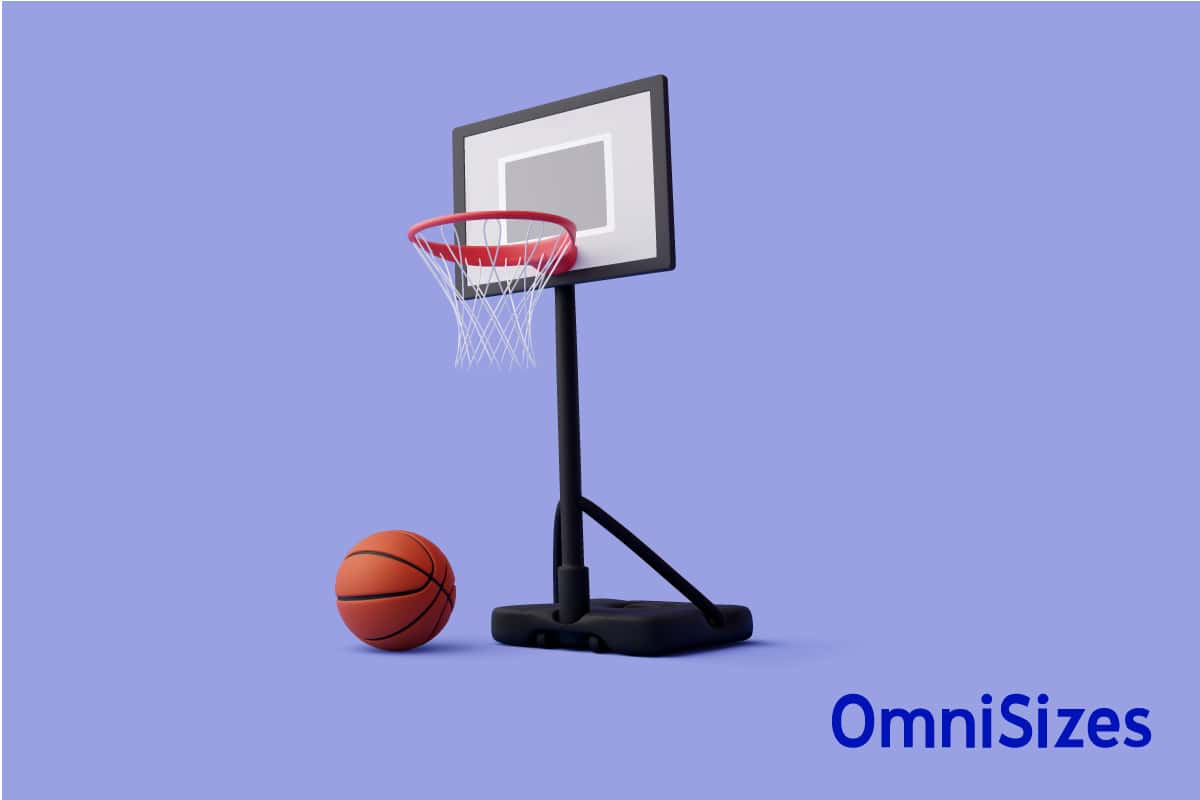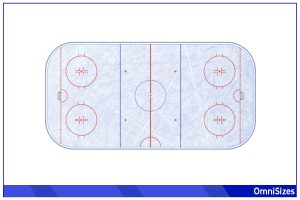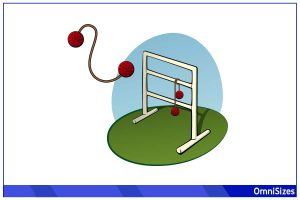Basketball revolves around two primary pieces of equipment: the ball and the hoop. The hoop, comprised of the backboard, net, and rim, plays a pivotal role in how the game is played, scored, and enjoyed. Whether you’re training for a school league or trying out for the pros, you need an appropriate baseball hoop and rim size.
Basketball rims, which are the orange rings through which the ball passes to score, is 18 inches (45.72 cm) wide. The hoop, which includes the rim and backboard, stands 10 feet (3.05 m) off the ground. There are variations in size depending on specific needs and league guides.

This guide will go into more detail regarding basketball hoops and rims, including explaining their dimensions, the reasons behind size variations, and how to select the right one for your needs.
Parts of a Basketball Hoop
Basketball hoops are more than just a ring and net. They consist of multiple components to enhance the game’s flow, provide stability, and ensure safety.
1. Backboard
The backboard is the rectangular board behind the rim. Made from materials like tempered glass, acrylic, or polycarbonate, it assists players in making bank shots. Its reflective surface aids in improving visibility during play.
2. Rim
The circular metal ring where players aim to shoot the ball is called the rim. Some rims come with a breakaway feature, allowing them to bend slightly during dunks to prevent injuries.
3. Net
Hanging from the rim, the net slows the ball down after a successful shot, allowing players to easily retrieve it. Nets can be made of nylon or chain, with the former being more common for indoor games and the latter for outdoor courts.
4. Pole
The pole supports the entire basketball system. Typically made from steel, it can be stationary or adjustable in height to accommodate players of different ages and skill levels.
5. Base
For portable basketball systems, the base provides stability. Filled with water or sand, it keeps the hoop upright during play. In-ground systems, on the other hand, are anchored directly into the ground.
Basketball Hoop and Rim Dimensions
Basketball hoop dimensions are standardized to offer consistency, whether you’re playing a casual game in the backyard or competing professionally. The following measurements can be found in the official NBA rulebook.
1. Hoop Height
The regulation height of a basketball hoop, from the playing surface to the top of the rim, is 10 feet (3.05 meters). This height is consistent across high schools, colleges, and professional leagues like the NBA. For younger players or those looking to practice specific skills, adjustable hoops can be set to lower heights.
2. Backboard Size and Material
Standard backboards measure 72 × 42 inches (182.88 × 106.68 centimeters). They provide a clear target for bank shots and rebounds. Material-wise, backboards are crafted from tempered glass, acrylic, or polycarbonate. Tempered glass is preferred for indoor settings like gyms, offering the truest bounce. Acrylic and polycarbonate are more durable, making them suitable for outdoor use.
3. Rim Diameter
The interior diameter of a standard basketball rim is 18 inches (45.72 centimeters). This size offers a challenging yet achievable target for players, balancing the game’s difficulty and entertainment.
4. Rim Distance from Backboard
The distance from the backboard to the rim’s center, known as the “offset,” is typically 6 inches (15.24 centimeters). This space allows players to make layups and bank shots without interference from the board itself.
5. Base Dimensions
For portable basketball systems, the base’s size and weight directly impact stability. Larger bases, which can be filled with sand or water, offer more stability against aggressive play and windy conditions. The typical base dimensions range from 30 to 50 gallons in volume.
6. Pole Size and Shape
The pole, which holds the hoop system, can vary in size. Common diameters range from 3.5 to 5 inches (8.89 to 12.7 centimeters). Poles can be round or square, with the latter often being sturdier.
7. Overhang
Overhang is the distance from the baseline to the front of the backboard. In official games, this is usually 4 feet (1.22 meters). It ensures players have enough room to play under the basket without colliding with the pole.
Basketball Hoop and Rim for Different Age Groups
Basketball’s universal appeal extends across all age groups. The hoop and rim dimensions can vary to suit the player’s age, skill level, and safety requirements.
1. Toddlers and Preschoolers (Ages 2-5)
- Hoop Height: Typically, hoops for this age bracket are adjustable, starting as low as 2.5 feet (0.76 meters) and can be raised as the child grows.
- Rim Diameter: The rims are often smaller, around 9 inches (22.86 centimeters) in diameter, to accommodate mini basketballs, which are easier for little hands to grasp and shoot.
- Backboard Size: Smaller than standard, often around 24 × 16 inches (60.96 × 40.64 centimeters). They’re usually made from lightweight, durable materials like plastic.
- Safety Features: Many toddler hoops come with a broader base for stability and are made from softer materials to minimize injury risks.
2. Kids (Ages 6-9)
- Hoop Height: As kids grow, the hoop height can be adjusted upwards, usually ranging from 5.5 to 7.5 feet (1.68 to 2.29 meters).
- Rim Diameter: Rims remain at a smaller diameter, around 9-10 inches (22.86-25.4 centimeters), with some hoops offering standard 18-inch (45.72 centimeters) rims.
- Backboard Size: Slightly larger than toddler backboards, dimensions might be around 32 × 24 inches (81.28 × 60.96 centimeters).
- Safety Features: Bases are often fillable for added stability, and backboards may start introducing materials like polycarbonate.
3. Pre-Teens and Early Teens (Ages 10-14)
- Hoop Height: Approaching the official height, these hoops can be adjusted from 7.5 to 10 feet (2.29 to 3.05 meters).
- Rim Diameter: The standard 18-inch (45.72 centimeters) diameter becomes more common, preparing kids for regulation play.
- Backboard Size: They range from 44 to 54 inches (111.76 to 137.16 centimeters) in width, made from durable materials like acrylic.
- Safety Features: Padding might be introduced around the pole and bottom edge of the backboard.
4. Adults (Ages 15 and up)
- Hoop Height: Regulation height of 10 feet (3.05 meters) is standard for this age group, reflecting official gameplay standards.
- Rim Diameter: The 18-inch (45.72 centimeters) diameter is consistent with professional setups.
- Backboard Size: Backboards measure close to the regulation size of 72 × 42 inches (182.88 × 106.68 centimeters), mostly made from acrylic or tempered glass.
- Safety Features: Breakaway rims, which can bend slightly under pressure, are introduced. This feature prevents injuries during aggressive plays or dunks.






